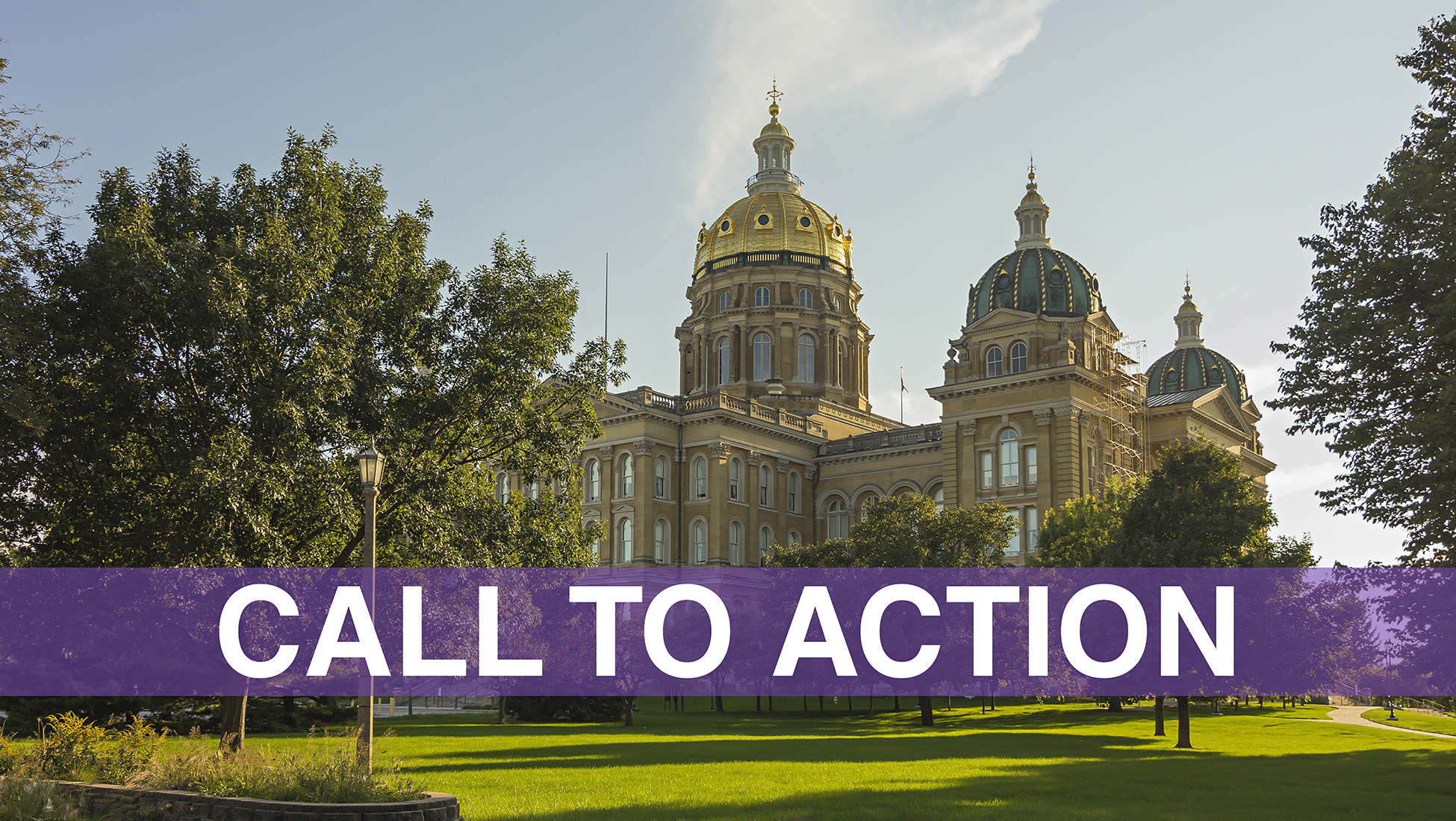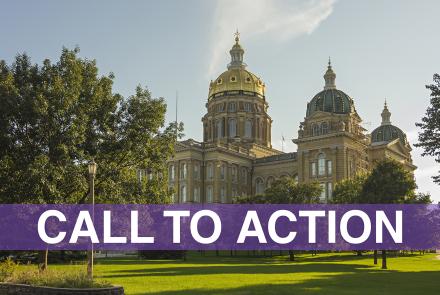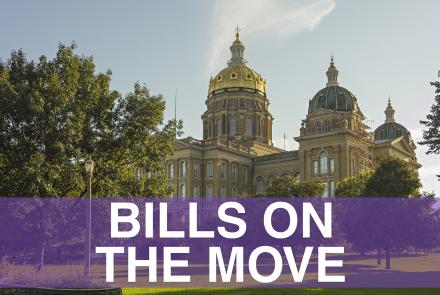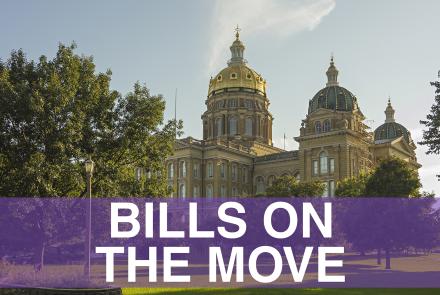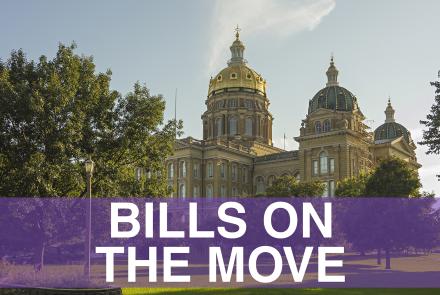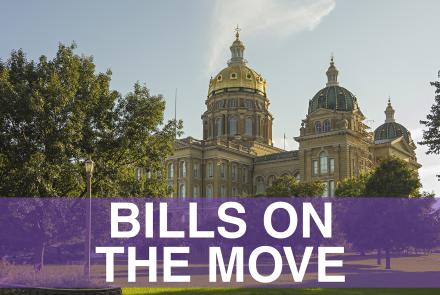Call to Action on School Funding - 2/9/2021
CALL TO ACTION
School Funding Update
February 9, 2021
Download the full Call to Action on School Funding
The House and Senate Committees approved proposals on school funding yesterday, moving them forward for floor consideration. The Senate is expected to debate their bill, SF 269, today (Tuesday, February 9, 2021) and send it over to the House. The 30-day deadline for enacting the school funding bill is looming, so expect these bills to be debated and difference resolved this week. Contact your Senators and Representatives today requesting adequate and equitable funding for Iowa students.
The Senate’s, SF 269, which sets a 2.2% increase in SSA and closes the equity formula gap by $15 per pupil, bringing the state cost per pupil up to $7,218. The bill provides a little more to transportation equity growth ($768,000). SF 269 includes a $65 per pupil one-time payment for districts who were completely in compliance with return-to-learn requirements when school opened last Fall (excludes only Des Moines at a $2.1 million shortfall compared to other districts.) UEN is registered opposed.
The House’s state aid proposal, HF 438, sets a 2.5% increase in the state cost per pupil, closes the equity gap by $10 per pupil, bringing the state cost per pupil up to $7,239. UEN is registered as undecided on this bill. It falls short of the UEN’s 3.75% increase request, but is better than the Senate.
The House’s one-time in-person learning bill, HF 439, appropriates $30 million to Department of Management to distribute to schools on a prorated basis for every school day between Aug. 23 and Jan. 31 that provided full-time in-person learning option to all students. The subcommittee chair explained the House’s intent to provide support to schools for the extra costs of providing full time instruction that districts with virtual or hybrid instruction may not have incurred.
- The bill defines full time as 6 hours, allows a day less than 6 hours to count for half a day, allows schools offering hybrid instruction to could those 6 hour days as half days for purposes of proration.
- The formula does not recognize that most districts comply with calendar requirements based on hours of instruction rather than days.
- Many districts, rural, suburban and urban alike, had times when their elementary school provided full-time in-person, but their middle school and/or high school were hybrid. The bill doesn’t provide any direction in allocating resources based on partial in-person full-time instruction.
- The bill does not fairly treat districts on trimesters with more days in the second half of the year, districts that started late or offered virtual learning due to the Derecho storm damage, or districts that were awarded a waiver from in-person instruction due to elevated COVID positivity rates and staff shortages, during which virtual learning was provided.
Advocacy Messages for the Senate:
Thank you for the investment in formula equity and transportation. However, 2.2% increase in the per pupil cost is not enough. With declining enrollments, more districts will be on budget guarantee impacting local property tax payers. School staff members have gone above and beyond this year during the pandemic to engage students and keep them safe. A 3.75% increase would better recognize the heroic efforts of educators and the needs of students. UEN supports removing the one-time $65 per pupil amount and instead, increasing the state’s contribution to the funding formula by that $29 million. The state, over the last 12 years, has averaged $95 million in annual funding through the formula. We encourage the Senate and House to meet this benchmark for the 2022 school year. This total package is estimated to cost $51 million (assuming the $15 million cut to the AEAs will continue), well short of the $95 million average investment.
PK footnote; this bill reduces PK funding by over $7 million since preschool budgets are based on the prior year’s Oct. 1 enrollment count with no budget guarantee. We anticipate a normal return of four-year-olds to PK in August. Some young 5-year-olds would better served in PK if funding 5-year-olds counted (see HF 318). UEN looks forward to continued conversation in supporting quality PK.
Advocacy Message for the House:
Thank you for the investment in formula equity and transportation. However, 2.5% is not enough. With declining enrollments, more districts will be on budget guarantee impacting local property tax payers. School staff members have gone above and beyond this year during the pandemic to engage students and keep them safe. A 3.75% increase would better recognize the heroic efforts of educators and the needs of students. We would support removing the one-time $65 per pupil amount and using that $29 million in the formula. The state, over the last 12 years, has averaged $95 million in annual funding through the formula. We encourage the Senate and House to meet this benchmark for the 2022 school year. This total package is estimated to cost $65 million, fiscal note pending, (assuming the $15 million cut to the AEAs will continue), well short of the $95 million average investment.
PK Footnote; this bill reduces PK funding by over $7 million, since preschool budgets are based on the prior year’s Oct. 1 enrollment count with no budget guarantee similar to K-12 budgets. We anticipate a normal return of four-year-olds to PK in August. Some young 5-year-olds would better served in PK if funding 5-year-olds counted (see HF 318). UEN looks forward to continued conversation in supporting quality PK.
HF 439 One-Time Supplement for In-Person Learning: this bill has good intentions and we appreciate the House allocating $30 million in additional resources. The UEN is registered opposed to this bill based on the allocation formula. The intricate exercise of figuring out the days and hours that would qualify and the winners and losers from the outcome both conflict with our core principles: 1) local school boards should have the authority to and will make the best decisions for their communities and students and 2) all students should have a great Iowa education regardless of their zip code. The money would be better spent and distributed through the formula, which achieves those equity and local control principles in addition to lowering budget guarantee property taxes.
Senators and Representative Contact Information:
The following links will help you find contact information such as email address and often home or cell phone numbers, so you can easily connect with your legislators.
Find your Senator’s contact information here: https://www.legis.iowa.gov/legislators/senate
Find your Representative’s contact information here: https://www.legis.iowa.gov/legislators/house
If you don’t know who your Senators or Representatives are, find out by selecting your school district, through the interactive map, or by entering an address here: https://www.legis.iowa.gov/legislators/find
To call and leave a message at the Statehouse, the House switchboard operator number is 515.281.3221 and the Senate switchboard operator number is 515.281.3371. You can ask if they are available, leave a message for them to call you back, or just leave a short message such as “public schools need at least 3.75% SSA.” (Legislators are typically back home over the weekend).


